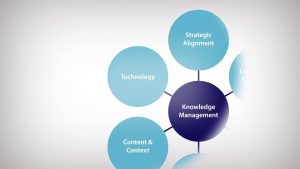Enterprise Knowledge and Knowledge Management Strategies
When implementing a knowledge management system, it is important to consider how best to align enterprise knowledge management strategies. While the technology used to create the system is very important, the structure of the knowledge repository will depend on the types of people who will use the system. The system may include FAQs, user forums, and instructional videos, but can also include advanced customer education training. Google Analytics and Optimizely provide such advanced training programs.
The process for managing knowledge begins with an understanding of the purpose of the project and the purpose. The objective is to maximize the organization’s potential for innovation and growth. KM systems and solutions are not limited to capturing existing information. They must integrate with other business processes and technologies. In other words, they must enable people to build new knowledge. But how can we ensure the success of KM projects? Let’s discuss.
The central knowledge base is a curated set of technical and business metadata. It is the hub of the enterprise knowledge landscape. The process of managing the knowledge base includes scoping, editing, and searching its contents. It can be used for business or technical purposes. The process of technical metadata onboarding focuses on ongoing importing of technical knowledge from different sources. The aim is to make the centralized KM a valuable resource for the organization.

Aligning Enterprise Knowledge and Knowledge Management Strategies
Knowledge management is a process that combines people, processes, technology, culture, and people. It is often challenging to integrate with existing business processes and workflows. The first step is to identify the top user personas. These individuals should be profiled and defined for their pain points and preferences. For example, a sales representative in the field may have different needs from an R&D employee who needs more structured information.
While there are many benefits to implementing a knowledge management program, it is important to understand how it will affect the business. There are four basic components to successful knowledge management. The first one is the ability to share. Sharing information between individuals and organizations is essential to creating new knowledge. Effective collaboration and communication among employees will improve the quality of this knowledge. And the last one is the creation of new knowledge. Incorporate these five elements into your KM program, and you’ll be able to reap the benefits of both.
An enterprise-wide enterprise knowledge management solution is a type of system that enables employees to access information shared by subject-matter experts. This type of system can also be used for employee and department-specific training. It serves as the central hub of information for your entire organization. This layer is critical to the success of the implementation of KM in your organization. The broader scope of enterprise knowledge management will improve your business’s bottom line.